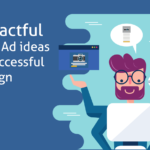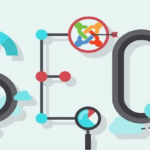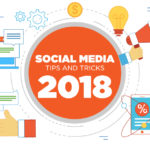
Have you considered adding the power of artificial intelligence (AI) to your inbound marketing campaigns? Are you calculating keyword proximity to boost your SEO results? Have you leveraged the power of lookalike audiences on Facebook’s advertising platform? Are you optimizing your AdWords rating by working to boost your Quality Score?
If you answered “yes” to any of these questions, congratulations—you’re ahead of the marketing game for 2018. These four terms and six others listed in this post are among the hottest digital marketing terms for the new year. This short list will give you a quick overview of terms you must know. You can also check out our complete list of Must-Know Digital Marketing Terms for 2018.
1 — Artificial Intelligence
AI became the most influential marketing term of 2017. But in 2018, the technology itself is poised to accelerate in actual use. “It’s not just the marketing word of the year. It’s the transformative phenomenon that’s going to reshape the world as we now know it,” said one anonymous Association of National Advertisers member. AI is an area of computer science that emphasizes the creation of intelligent machines that work and react like humans, including speech recognition, deep learning, planning and problem-solving. According to Demis Hassabis, head of Google DeepMind, the search giant’s AI wing, AI is the “science of making machines smart.”
What does AI mean for digital marketers? Many predict that the marketers who begin to deploy AI will see outsized benefits—in fact, so great that inbound marketing without some type of AI won’t make economic sense. The industry movement birthed by HubSpot will finally achieve its ultimate goal: attract, convert, close and delight at scale.
AI can already produce results at all four stages of the buyer journey:
- Attract — Natural language processing (NLP) and natural language generation (NLG) used in AI can automate and accelerate content creation and scaling, for example, HubSpot’s Content Strategy tool
- Convert — AI systems can personalize and test landing pages, improving conversions at scale; it also has the power to remove forms altogether.
- Close — AI excels at extracting insights from data that humans miss, which delivers new lead opportunities
- Delight — AI-powered tools can improve customer experiences by giving buyers more of what they want
2 — Contextual Marketing
Contextual marketing is all about delivering the right content at the right moment based on a potential client’s preferences using behavioral targeting and enabling brand awareness, recall and engagement. It fuels targeted ads based on user information such as recent searches and web histories. The purpose is to offer products and services to customers who are already interested in them.
Contextual marketing offers marketers several benefits including:
- Cost effectiveness — It doesn’t require a huge investment. You just need to collect the right data in a CRM tool.
- Targeted traffic — By focusing on a specific behavior and demographics, you can target your prospects right when they’re about to make a purchase decision.
- Enhanced customer experience — Because contextual marketing is highly personalized, the marketing message that gets sent to consumers are properly timed and strategically positioned versus bombarding them with marketing messages they don’t want.
- Increased customer engagement — Not only do you get to place your brand in front of customers, but your right-time messages encourage active participation with your brand.
- Non-disruptive to consumers — With just-right timing, your marketing doesn’t seem like ads. It appears as solutions to consumers’ problems.
- Greater sales and revenue — Because your marketing is highly targeted, conversion rates will be higher and sales will increase.
3 — Cost Per Acquisition (CPA)
CPA is the measurement of the cost of acquiring a customer who clicks on a website link or completes any action—in other words, the return on marketing investment, in particular, total marketing spend over total front-end conversions.
Here are a few more distinctions of CPA:
- CPA is a sales- and leads-based measurement, which differentiates it from cost-per-impression (CPM) and cost-per-click (CPC). While CPM and CPC are based on eyeballs and traffic, CPA is based on specific lead generation actions.
- CPA is on par with ROI, though not synonymous, because it can be an early indicator of long-term campaign success in terms of lead generation.
- Continually optimizing for lower CPA can help marketers respond in agile ways based on campaign performance, leading to more efficient campaigns overall.
4 — Hyperlocal
To build a loyal local customer base, it’s important to be accepted as part of the community. Hyperlocal advertising is an efficient way to accomplish this goal. Hyperlocal means an area close to home—the people within walking or driving distance to a particular destination or those united in one identifiable community.
Marketers can optimize their hyperlocal campaigns with these tips:
- Make marketing feel local — Making use of local idiosyncrasies, such as weather, geography and demographics, in campaigns can help personalize brands.
- Assimilate your business into your communities — Customers’ needs vary geographically and, hence, call for region-specific marketing strategies.
- Unique customer experiences — Creating unique marketing experiences that are so good, companies can start building their own communities of local followers. An example would be making local customers part of your branding story.
5 — Keyword Proximity
When it comes to keywords, a factor that’s weighted by Google’s search algorithms is keyword proximity. Keyword proximity refers to how close two or more keywords are to each other. You will achieve higher rankings if you place your keywords close together in a natural sounding way.
Here is an example of considering keyword proximity: a website is hoping to rank for the search term “digital marketing agency Cleveland.” The heading reads, “Your digital marketing agency for growing your business in Cleveland.” Good, but an even better option may be, “The digital marketing agency Cleveland businesses trust to help them grow.”
Along with proximity, other important keyword factors that Google ranks for include density, frequency and prominence:
- Keyword density — the percentage of keywords that can be found in the indexable text on a web page
- Keyword frequency — the number of times a particular keyword appears on a website
- Keyword prominence — how prominent your keywords are within your web page; in other words, how close to the beginning of the web page, sentence, title, header tag, or meta description keywords are placed
6 — Keyword Stemming
Search engines group search results not only by exact keyword matches, but also by variations of keywords in semantic groups, such as singular-plural, related suffixes and synonyms. Search engines view these similar keywords as synonyms. As a result, “keyword stemming” can subsequently help extend your reach.
Use these tips to leverage keyword stemming:
- Add prefixes or suffixes to keywords as modifiers. For example, “en” to “large” to create “enlarge.” Add “-ful” to “power” to make “powerful.”
- Add pluralized versions of keywords, such as changing “child” to “children.”
- Include variations of root words, such as “practicing,” “practices” and “practiced.”
- Leverage combined words to gain ranking for both words as well as the combined word, such as “key,” “word” and “keyword.”
7 — Latent Semantic Indexing (LSI)
This is a mathematical method used to determine the relationship between keyword phrases within a piece of content. Search engines use it to form a better understanding of text’s subject matter. Google rewards sites that include relevant LSI keywords with higher rankings and more traffic.
Benefits of LSI to each “stakeholder” includes:
- Search engines can provide more useful and relevant search results, because they can decipher language and classify topics based on synonyms and related terms
- Marketers can improve search rankings by adjusting their keywords to use LSI best practices
- Publishers can connect with more engaged audiences because their content is more targeted and able to connect with the right users
- Searchers can more easily find the content that matches their needs and wants
8 — Lookalike Audiences
Facebook’s lookalike audiences is an advanced targeting option in its ad services that goes beyond basic interest and demographic targeting. It provides the ability to find new people based on their resemblance to your customers using a percentage sample of people in your target country (from 1 to 10 percent)—effectively cloning your ideal audiences.
Tips to leverage lookalike audiences include:
- Create a video lookalike audience — Facebook users watch 100 million hours of video on the platform every day. The tool finds viewers who are watching videos like yours.
- Setup email list lookalike audiences — Takes your existing customer list and uses it as the source for your lookalike audience.
- Create conversion lookalike audiences — Lets you find new target audiences using a website custom audience of people who have completed a specific conversion event.
- Construct page likes lookalike audiences — If you have a large number of Facebook fans who actively engaged with your organic posts, a lookalike audience is a great way to find new similar target audiences.
9 — Lost Impression Share (Budget) & Lost Impression Share (Rank)
Lost impression share (budget) is the percent of impressions an ad lost out on because of an insufficient budget. Lost impression share (rank) is the percent of impressions an ad lost out on because of a low ad rank. In paid search, impression share is used to evaluate the marketplace opportunity (or consumer demand) for a defined set of keywords. Impression share is meant to answer the question: “How often is my ad served when consumers are searching my keywords?”
Impression Share is a vital metric for a campaign’s health and overall performance for several reasons including:
- Keyword strength indicator. If you have a very high impression share for both “exact match” and “standard,” you can feel confident that your coverage is strong.
- Identifies areas of missed opportunity due to budget constraints. If you have a strongly performing campaign or ad group that’s missing out on impression share due to budget, you can increase your budget to gain additional conversion volume and overall campaign performance.
- Increase quality score on terms that may be limited by rank. If you have keywords that perform, but are lacking on impression, you can work on raising the Quality Score (see below) for these terms by updating ad copy and/or the landing page.
- Study auction insights on a regular basis. If you’re seeing a drop in your impression share, it might be attributable to new entrants to the auction that may outrank and outbid you.
- Raise your bids to be more competitive. If all else fails, work on bid adjustments.
10 — Quality Score
Quality Score is Google AdWords’ rating of the relevance and quality of keywords used in PPC campaigns. It is largely determined by the expected click-through rates (CTR), the relevance of ad copy, landing page quality and relevance and other factors. However, CTR is the biggest part of a Quality Score at up to 60 percent, according to Hal Varian, Google’s Chief Economist.
Understanding your Quality Score is important because:
- If you improve your Quality Score, it can lower your cost per click (CPC)
- If you lower your CPC, it can lower your cost per conversion
- If you lower your cost per conversion, it can boost your revenue
- It helps you lower your cost per acquisition (CPA)
Digital marketing is not a static enterprise. Everything is always changing—including advances in technologies, digital marketing services and terminology. To be successful and thrive in this fast-moving and ever-changing world requires staying on the forefront of new tools, strategies and terms. This short list of important terms to know in the coming year is part of our ever-expanding knowledge base.
Call Elkmont Media for all of your digital marketing needs, including: social media, website design, SMS, text message marketing, video, and email marketing.
Comments are closed.











